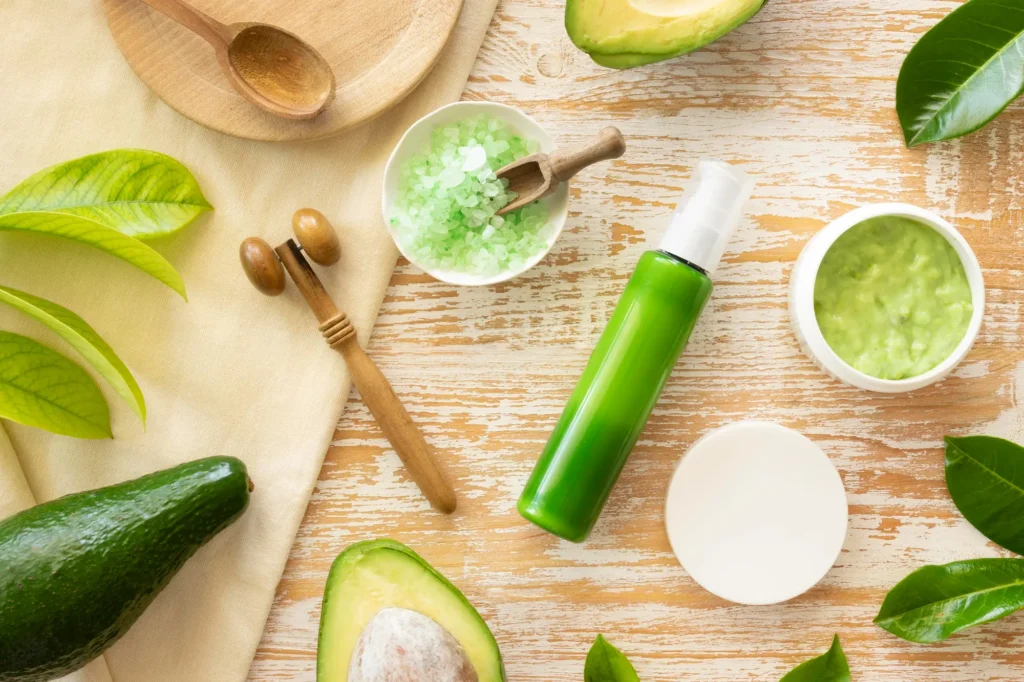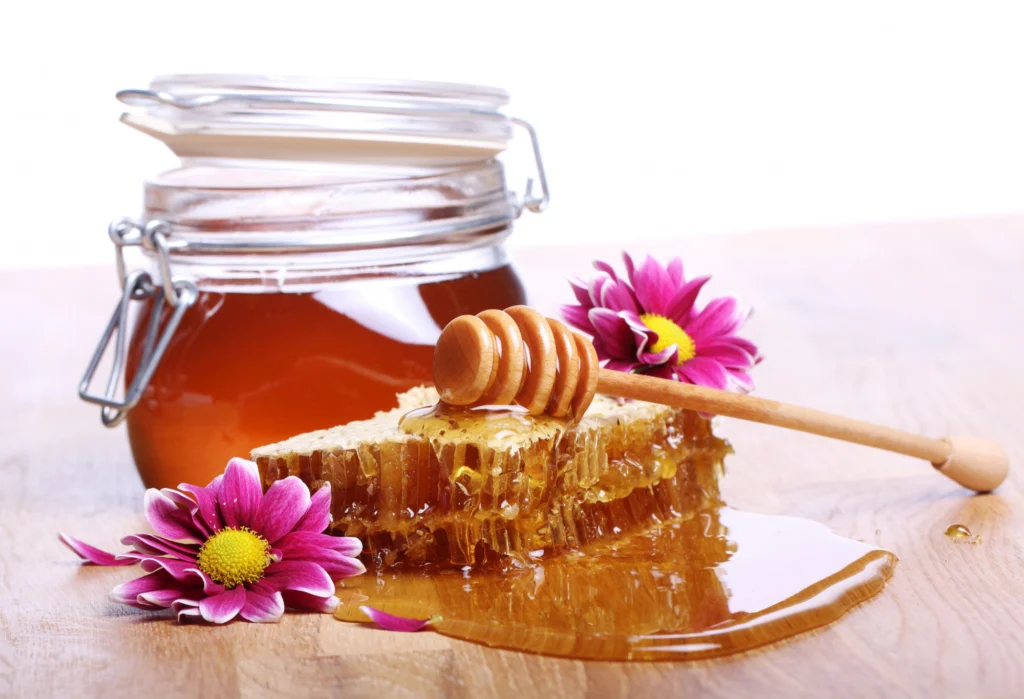Starting solids can feel like a milestone and a mystery. That’s why getting clear on what stage 1 baby foods are — and how to approach them — is so helpful. You’ve just gotten into the rhythm of feeding and sleeping, and now suddenly — you’re steam-blending squash and second-guessing if peaches are too acidic.
I felt that too.
So let’s break this down in a way that’s useful, calming, and parent-tested.
When Should Babies Start Stage 1 Foods?
Most babies are ready for Stage 1 foods somewhere between 4 to 6 months. But this milestone isn’t just about age — it’s about signs of readiness.
Signs Your Baby Is Ready
- They can sit up with some support
- Their head and neck stay steady during feeding
- They reach for your plate or stare while you eat
- Their tongue reflex has started to fade
Some babies show interest early. Some don’t until 6 months or even a little later. It’s normal.
Still, always check with your pediatrician before starting solids. The American Academy of Pediatrics (AAP) recommends exclusive breastfeeding (or formula) until 6 months in most cases. Starting solids too early may increase the chance of choking or allergies, especially for babies not developmentally ready.
What Exactly Are Stage 1 Baby Foods?
When starting with stage 1 baby foods, focus on options that are smooth, easy to digest, and one-ingredient only.
Think single-ingredient foods with a soft, smooth texture. This stage is about introducing one food at a time so your baby can learn new flavors — and you can easily spot any allergic reaction.
They should be:
- Easy to digest
- Not too sweet or salty
- Served in small amounts, usually just a few spoonfuls at first
Texture-wise, it’s often compared to thin applesauce. You can thin purees further with breast milk, formula, or a bit of water depending on what your baby needs.
Why Organic Matters for Stage 1 Foods
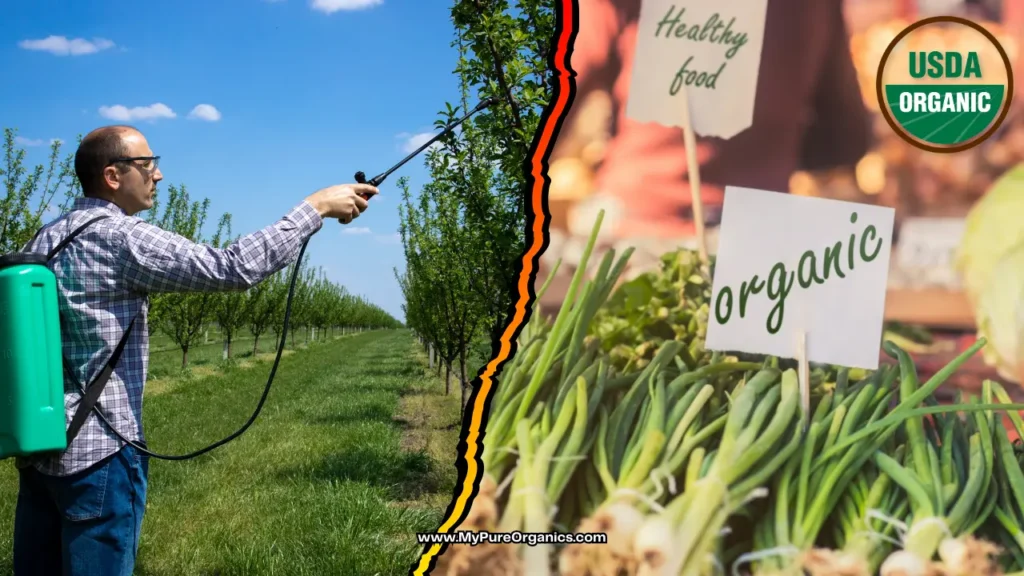
There’s no doubt about it — baby food is personal. And when it comes to picking between organic and non-organic, many parents ask, “Is it really worth it?”
Here’s what we know:
Babies eat more food per pound of body weight than adults. That means even tiny amounts of chemicals or contaminants can have a larger effect on their small systems.
Multiple studies have found pesticide residues in conventional baby foods — including items labeled “natural.” In contrast, organic foods are grown without synthetic pesticides, herbicides, or genetically modified organisms (GMOs). They’re also processed without artificial preservatives or colorings.
A small clinical trial published in Environmental Health Perspectives found that participants who switched to an organic diet had significantly reduced levels of pesticide metabolites in their urine, even after just a few days.
For a baby whose brain and organs are still developing, that kind of reduction matters.
Recent research backs this up. A 2024 study published in World Journal of Pediatrics found that infants fed organic formula had lower exposure to antibiotic-resistant bacteria compared to those using conventional formulas — likely because organic animal products are raised without routine antibiotics.
Another systematic review highlighted that organic foods overall — including baby foods — consistently show lower levels of pesticide residues. That makes a real difference when you’re feeding a body that’s still growing and developing.
What Does the USDA Organic Label Actually Mean?
The term “organic” isn’t just marketing fluff. When you see a USDA Organic seal, here’s what it guarantees:
- No synthetic pesticides or chemical fertilizers
- No growth hormones or routine antibiotics
- No GMOs
- No artificial colors, preservatives, or flavors
The USDA requires organic baby foods to be produced without GMOs, artificial preservatives, or synthetic pesticides. Products labeled “100% organic” must meet strict federal standards.
If you’re new to the world of organic baby food and want a full breakdown of what’s safe, what to look for, and how to get started, check out our guide: Organic Baby Food 101 – What Every Parent Should Know
5 Organic Stage 1 Baby Food Recipes (Quick & Safe)
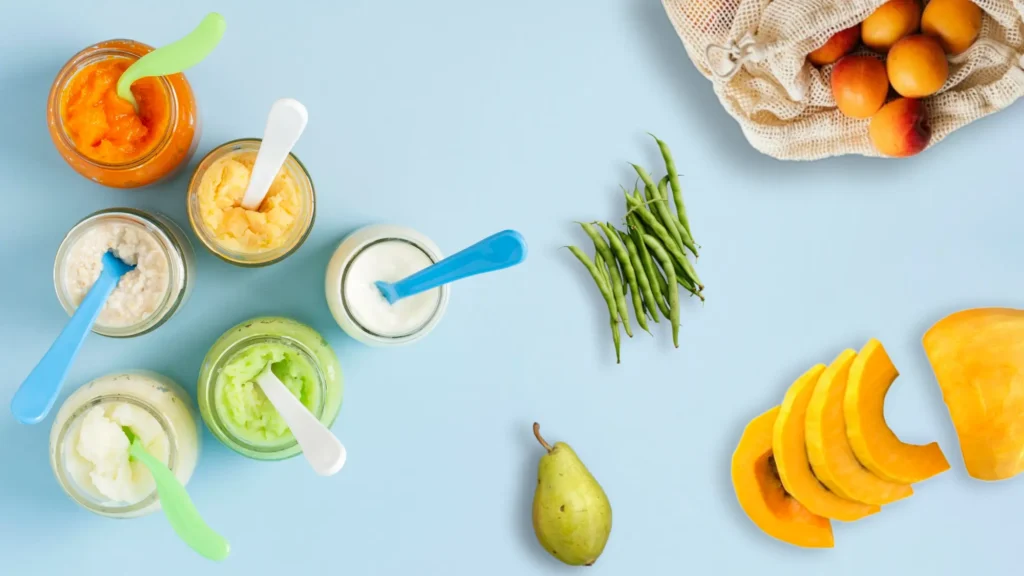
These are gentle, nutrient-rich, and beginner-safe. You don’t need fancy gear or hours of prep. Most take less than 15 minutes to make.
🥣 Butternut Squash Purée
This one’s a favorite — rich in vitamin A, naturally sweet, and creamy.
- Peel and cube squash
- Steam until soft (about 10–12 minutes)
- Blend until smooth, add breast milk if needed
- Freeze extras in silicone trays
🍐 Pear + Quinoa Purée
Great for digestion and packed with fiber.
- Peel and chop a ripe pear
- Steam until soft
- Rinse and cook a spoonful of quinoa (well-rinsed to remove bitterness)
- Blend together until creamy
Note: Quinoa is safe for babies after 6 months when cooked soft and offered in small amounts. Always introduce one new ingredient at a time.
🎃 Pumpkin Baby Purée
Naturally sweet and high in beta-carotene.
- Use fresh pumpkin (peeled and steamed) or canned organic pumpkin puree
- Blend with a splash of formula or breast milk
- No added sugar, no pie spices — just pure pumpkin
🟢 Green Pea Purée
A great source of plant-based protein and iron.
- Steam fresh or frozen peas until soft
- Blend and strain if needed
- Peas are slightly textured, so make sure to get a smooth consistency
🍑 Peach Purée
Perfect for summer babies.
- Peel and slice ripe peaches
- Steam briefly to soften (3–4 minutes)
- Blend until smooth
- Offers vitamin C and a naturally sweet flavor babies tend to love
If you’re looking to try more gentle blends like this, I’ve shared several other go-to options here — ones that worked great for us during those early months: More Homemade Recipes for 6–9 Months
Tools That Make Homemade Baby Food Easier
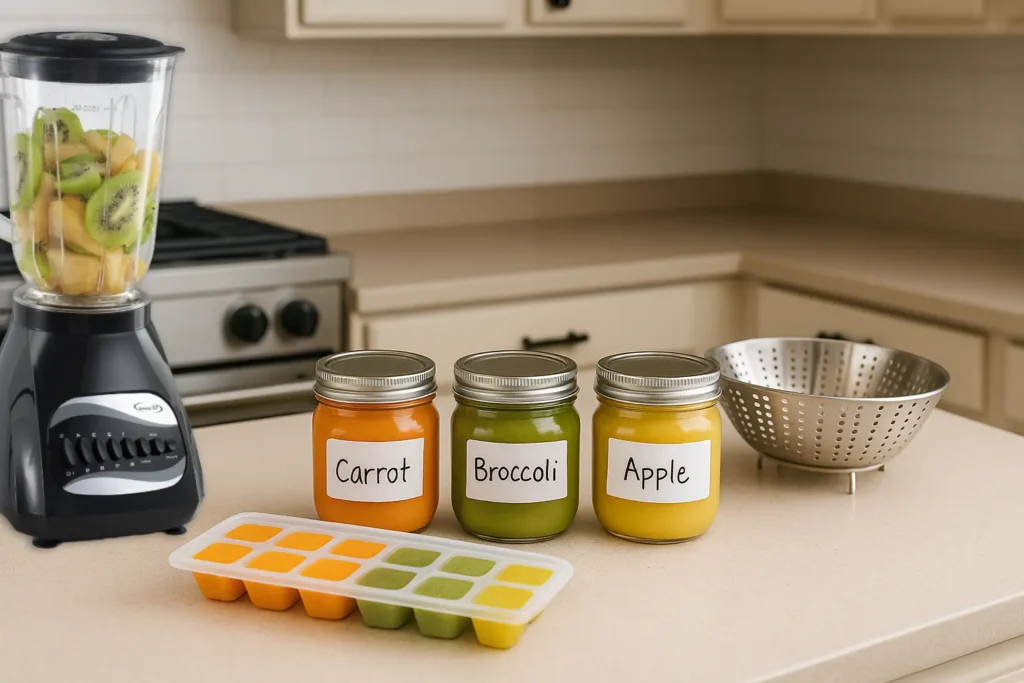
You don’t need a fancy baby food maker.
Here’s what worked for me:
- A simple blender or food processor
- Ice cube trays (silicone ones pop out easier)
- Glass jars or containers with dates labeled
- A steamer basket or pot with a lid
My Batch-Cooking Flow
- Pick 2–3 ingredients for the week
- Steam, blend, and freeze
- Thaw overnight in fridge or warm gently
Batch-prepping a few stage 1 baby foods each week saves time and keeps your freezer stocked with safe, simple meals.
For a full breakdown of the tools, timing, and freezing method I use, you can scroll to the homemade prep section inside this guide on feeding babies solids. It’s packed with realistic tips that won’t overwhelm you.
What to Avoid in Stage 1 Feeding
Even healthy foods can be risky if introduced too early.
Here’s what to skip:
- Honey (not safe under 12 months — risk of botulism)
- Salt or added sugar (kidneys aren’t ready)
- Whole nuts, raw veggies, grapes (choking hazards)
- Cow’s milk (okay in recipes, not as a drink before 12 months)
Also avoid:
- “Fruit blends” that sneak in added sugar
- Juices labeled as “baby” but are basically sugar water
Questions Parents Ask About Stage 1 Foods
Is Organic a Must for Stage 1 Baby Foods?
No. But if you’re picking and choosing, start with fruits and vegetables that tend to have higher pesticide residue.
The EFSA (European Food Safety Authority) has flagged apples, grapes, and strawberries as some of the most pesticide-contaminated produce over the years. While recent reports show progress — with a noticeable dip in pesticide residues — these fruits still sit high on the watchlist. If you’re a parent shopping for a baby just starting solids, it’s smart to stay cautious and consider buying these organic when you can.
What if my baby rejects the puree?
Totally normal. It can take 8–10 tries for babies to accept a new taste. Don’t give up — just try again later.
Can I mix foods this early?
Once you’ve tested single foods with no reaction, yes. You can mix them slowly. For example, mix peas and pears once both are tested individually.
Final Thoughts: You Don’t Have to Be Perfect
Homemade baby food is about intention, not perfection.
Start simple. Stick to whole foods. Buy organic when it matters. And trust that every little choice adds up to something bigger.
Whether you make all your food at home or just dabble in squash purée on Sundays — you’re doing great.
Each spoonful is one step closer to a healthy eater.


